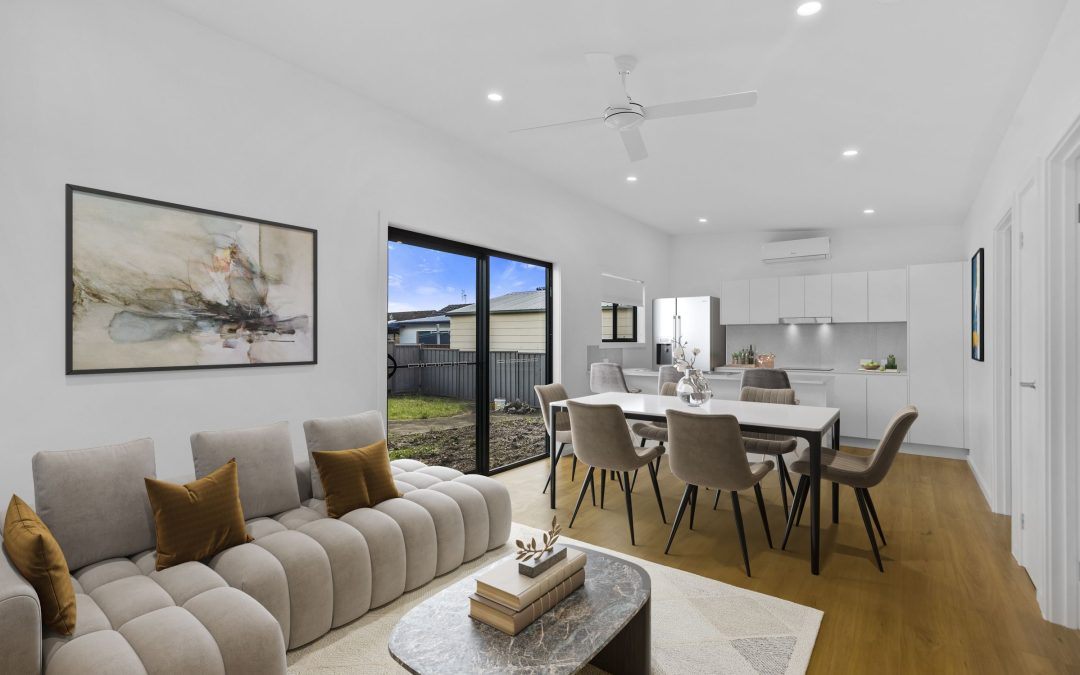What’s are the Newcastle Council Granny Flat Regulations?
Newcastle Council defines a secondary dwelling (commonly called a granny flat) as a self‑contained living unit on the same lot as an existing principal dwelling. It can be internal, attached or detached, but must remain on the same land parcel and cannot be subdivided. No separate access or services are required separately from the primary dwelling.
Planning Framework: Housing SEPP & Code SEPP
Housing SEPP (State Environmental Planning Policy – Housing 2021)
-
The Housing SEPP has replaced the Affordable Rental Housing SEPP 2009.
-
It allows secondary dwellings to be permissible in standard residential zones (R1–R5, and sometimes other zones under certain LEPs).
-
Under Housing SEPP, detached granny flats must meet criteria such as:
-
Minimum lot size 450 m²
-
Maximum size 60 m² (or as specified in LEP)
-
Only one secondary dwelling per site
-
Must be self-contained (kitchen, bathroom, laundry)
-
Exempt & Complying Development Code SEPP (Code SEPP)
-
Complying Developments are fast‑tracked approvals under State law, available when all SEPP and Code standards are satisfied.
-
For granny flats, this means a single Complying Development Certificate (CDC) may be issued quickly (often within 10 days and for Acrow Granny Flats, typically within 3 weeks) if the proposal complies.
-
The primary dwelling must also comply with the Code SEPP standards.
CDC vs Development Application (DA) under Newcastle Council
Complying Development Certificates (CDC)
-
A CDC can be issued by Newcastle Council or an accredited certifier, via the NSW Planning Portal.
-
Submissions vary based on site conditions: flood‑prone, bushfire area, potential land contamination or proximity to infrastructure.
-
Applicants must include documentation like BASIX, flood or bushfire certificates, and possibly arborist reports.
Development Application (DA)
-
Where a site doesn’t meet CDC criteria—e.g. lot < 450 m², bushfire prone, mine‑subsidence zone, heritage/protected site—an DA must be lodged with Newcastle City Council.
-
In Newcastle, “Local Development” includes granny flat DAs. Some larger or controversial proposals may go to the Hunter & Central Coast Regional Planning Panel but this is rare for a Granny Flat.
- Acrow Granny Flats find that typical DA submission time with Newcastle City Council varies from 3-6 months. We have good relationships with the council and meet with them once a week about our projects to help move them along
Environmental Constraints & Special Site Conditions
Bushfire
-
If the property is in a bushfire‑prone area, SEPP compliance is not permitted via CDC; a DA may be required.
-
Construction must meet AS3959‑2018 standards and Planning for Bush Fire Protection guidelines. BAL level cannot exceed 29.
Flood‑Prone Land
-
CDC proposals on flood‑controlled lots require a flood certificate or report, and must comply with Council flood controls.
Acid Sulfate Soils, Contamination & Mine Subsidence
-
Sites with known acid sulfate soils or mine‑subsidence risk need specific technical studies.
-
Newcastle compliance checklists require Hunter Water notices, contaminated land disclosures, or geotechnical reports before CDC or DA approval.
Tree Removal/Heritage & Local Environment Plan Controls
-
Complying development requires separate consent for protected tree removal if affected by the proposal (based on LEP/DCP requirements).
Newcastle Council Submission & Assessment Requirements
-
CDC applications must follow Newcastle’s checklist including plans, engineering, BASIX, reports (flood, bushfire, arborist, acid sulfate, land contamination).
-
DA applications trigger Council assessment, exhibition to neighbours, and possible referral to the regional planning panel if needed.
| Pathway | Council Submission Made To | When Used |
|---|---|---|
| Complying Development | CDC via certified certifier or Newcastle Council | Typical for sites ≥450 m², flat, non‑flood/non‑bushfire, no heritage/tree constraints |
| Development Application | DA to Newcastle City Council | Required when site fails CDC rules (small lot, bushfire, flood, land contamination, heritage) |
Newcastle Council References & Links
We’ve summarised everything you need to thing about in this blog. To review official local requirements and apply:
-
Newcastle City Council secondary dwelling guide: definitions, zoning and approvals – read here
-
Newcastle Council Complying Development application guidance: includes checklist for flood, bushfire, contamination etc – read here
-
Newcastle development overview & DA information: process and forms for local development applications – read here
-
Newcastle City Council CDC Checklist – download here
- NSW Government Planning Rules for Granny Flats – read here
Building a granny flat in Newcastle means navigating both state regulations (Housing SEPP & Code SEPP) and local conditions under Newcastle City Council. Many sites qualify for a fast CDC approval when conditions are straightforward—but sites impacted by flood, bushfire, acid sulfate soils, mine subsidence, or heritage constraints typically require a full DA. With careful documentation and early technical assessment, clients often move through approvals efficiently.
Acrow Granny Flats Takes Care of Newcastle Council Granny Flat Regulations
Navigating granny flat regulations in Newcastle can be complex—especially when your site involves flood zones, bushfire risk, or council-specific requirements. At Acrow, we’ve delivered hundreds of successful granny flat projects across the Newcastle region. Our local team understands the nuances of CDC and DA pathways, and we know exactly what’s required for fast, compliant approvals. Whether you’re building in Adamstown, Shortland or Stockton, we handle the paperwork, technical reports, and council coordination—so you can focus on the bigger picture. Start with a FREE SITE VISIT or we can respect your time with a BALLPARK ESTIMATE, and let us guide you through what’s possible on your block.


